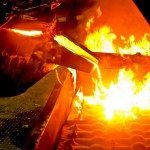Conveyor belts are used to carry the whole belt conveyor system, which consists of two or more pulleys with an endless loop that rotates, one of the best example of a conveyor belt is the one that you see in the airport where we get our baggage. Conveyor belts are mostly used by several companies to move heavy materials as well as equipment. One of the most important thing to consider is choosing the best conveyor type for your product, and this is the most common missed consideration. You will need to think about the size and the width of your product, what it is made of, the way the product will be loaded to the conveyor, the speed, whether do you need an incline or decline conveyor, and the environment in which the conveyor will operate.
With these considerations in mind, you will be able to pinpoint the right type of conveyor for your company. One of the most used conveyor belt is what we call the Cleated Conveyor Belt. Cleat or cleated has been defined as a strip of wood or iron used to support the surface to which it is attached. Cleated conveyor belts are widely used to carry coal and powdery such as sand, grain materials, and fine coal up steep inclines. When cleats are used in a conveyor belt, faster speeds, greater inclines and less floor space is acquired. Below are the several shapes of Cleated Conveyor Belts:
- Inverted Capital T
This type of cleated conveyor belt is best for lightweight materials such as packaged items, food products and small material parts. The cleats are shaped as an inverted letter T which stand perpendicularly on the belt and this will provide support and anti-shock for delicate materials.
- Lugs and Pegs
These are special kinds of cleats that are installed in the conveyor belts in the form of individual lugs and pegs. This is commonly used to transport wet products or materials, such as wet fruits or vegetables. This type of conveyor belt offers a cost-cutting alternative for cargo companies.
How to Maintain Cleated Conveyor Belts?
Cleats usually suffer from different issues and will be damaged and broken, most of the time there is an abuse on the conveyor’s return side, and some banging into the framework. Some conveyors also use vulcanized cleats, and it will also wear and tear over time. Another factor that deteriorate the cleats are the severe changes in temperature. So to avoid damaging the cleated conveyor belts, there are some tips on how to maintain it.
- When there are damaged cleats, learn to avoid using improvise materials, such as wood, iron, or anything that you think can fit. These improvised materials can make the conveyor work, but in the end it will cause more damage.
- Avoid using improper fasteners, like nails, wires, bolts, or screws as this can weaken and tear down the carcass of the conveyor belt.
What other questions can you think of to ask your local conveyor system supplier before choosing your conveyor system? At May Conveyor, belting is what sets us apart from others as we make our dies in-house by the May Tool & Die Group. We are a custom manufacturer of conveyor belting. We have pre-configured belts of various pitch & chain configurations for OEM & replacement applications as well as custom design capabilities. We provide belts for the metal working, recycling, machining, stamping, OEM, foundry, and mining industries. These precision components meet all automotive standards and is is how we have become known as a top quality supplier. Contact us today!







